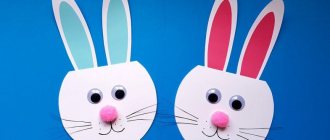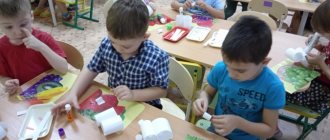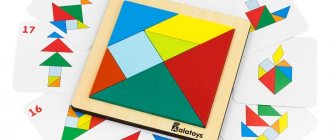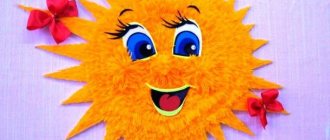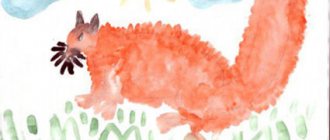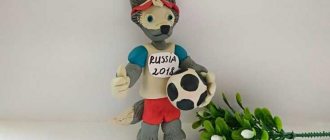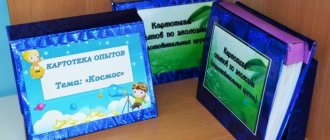Necessary materials
As mentioned above, most crafts will only require paper. To ensure that your work turns out bright and of high quality, you should use office paper, as it is stronger than ordinary children's colored paper. But, like the rest of the world, the art of origami is developing and improving, so some products will require scissors and glue. For example, for modular origami you will need scissors in order to cut the paper into the necessary pieces.
For this type of oriental art, there are also special sets of square paper in pastel shades measuring 10x10 cm. But before buying such a set, you should first study the specific pattern: each craft needs its own size.
For ease of folding, a wooden stick is also used, but it can be successfully replaced by a regular pencil.
For kids, choose paper in brighter shades, but such that its color resembles the color of a particular animal. For example, orange paper is suitable for a fox, gray paper for a mouse, brown paper for a dog, and green paper for a frog. Then the lesson will become doubly interesting.
How to make a paper duck using origami technique
In this master class we will show you step by step how to make a duckling from single-sided yellow paper using the origami technique. Photo 1.
To make the duckling we prepared:
[*]a square of yellow single-sided paper with a side of 10 cm; [*]a rectangle of the same paper measuring 10x5 cm; [*]glue; [*]plastic eyes.
We will use a square to make the body of the duckling, and a rectangle will be needed to create its head. Let's start with the torso. To do this, fold the yellow square in half with the white side inward.
At the place of the fold we mark the middle, and then bend the sides at an angle (they must be symmetrical).
Then we bend these corners down again.
We make the same fold on the other side.
We will now bend the lower corners to the sides. At this stage, you can use glue to fix all the layers.
On the reverse side we see the resulting blank for the duckling's body.
To create the head, take a rectangle and fold it in half, with the white side on the inside.
Fold the bottom edge of the top layer up.
Then we make folds on the sides in the form of small triangles. Secure them with glue.
Then you need to bend these corners again as follows. Let's use glue again.
Fold the top corners to the reverse side. This is the template for the duckling's head.
We connect it to the body.
Add plastic eyes. Our paper duck is ready.
Zadachi:Teach children to fold paper in different directions, giving it the shape of a dog.
Continue to improve children's skills to make correct, clear folds, and fold a square diagonally.
Strengthen the technique of performing the basic form “simple triangle”,
consolidate the ability to use the tearing technique when decorating crafts.
Expand knowledge about the world around us, that people need friends.
Develop imagination, creativity, and ingenuity.
Develop fine motor skills of hands in the process of work,
continue work on audio automation L.
Cultivate accuracy in work and love for pets.
Material : square sheets of paper 10x10 cm in two colors: white and brown, black and white paper, scissors, glue, brushes, dog toy, basket, clothespins, hearts.
Preliminary work: reading stories, poems, asking riddles, looking at illustrations, encyclopedias.
Integration: NGO “Cognition”, NGO “Artistic Creativity”.
Methodology: communicative, activity-based, problem-search.
GCD move:
Q : Children, what time of year is it now? (Winter)
V - l: Let's speak a pure phrase, emphasizing the sound L in our voice. Everything is white, white, white.
There was a lot of snow.
These are fun days -
All on skis and skates.
V— l: The day has come. I will smile at you, you will smile at me, and smile at each other and think: how good it is that we are here together today. We are calm and kind, friendly and affectionate. We are healthy.
Q : Take a deep breath and with a sigh forget yesterday’s grievances, anger, and anxiety. Breathe out of yourself the freshness and beauty of white snow, the warmth of the sun's rays, the purity of rivers, the love of animals.
Q : Children, do you have pets? Do you play with them? (Yes)
V - l: And today an unusual guest came to us, he is very sad, because he has no one to play with. Guess who it is?
Lies - silent:
If you come up, we’ll grumble. Who goes to the owner; She lets you know.
Vs : That's right, it's a dog. Look how sad she is. How can we help our guest? (Play)
V - l: But he will go home and will be left alone again. How else can we help him?
Children : He needs friends.
V - l: Yes, that's right. One is not bored when there are many friends.
V— l: Look what a friend I made to our guest. He is beautiful, like a real dog. Do you want to learn how to make one? (Yes). Now I will teach you how to make a paper dog.
V - l: Get comfortable around me and watch carefully how I will do the dog and learn.
Q : Let’s take a sheet of paper to work with. What shape is it? (square).
Q : I bend our square diagonally in half, matching the corners and sides, and smooth the fold line well with my finger. What line is this? (this is the fold line).
Q : What shape did our leaf become? (Triangular). Mark the middle of the large side by folding the top corners and pinching the fold point. What is this point called? (bending point).
In - l : Place your finger at the bend point, bend the upper right corner down - forward. We do the same with a different angle. Let's turn our craft over. We bend the top corner down towards ourselves, holding the sheet of paper with the other hand. Bend the bottom corner up. What did we get? (muzzle).
V - l: Now I will show you how to make the torso. Take a piece of paper and make a “basic triangle” out of it. What triangle? (basic) How do we do it? (fold the sheet diagonally).
B - L: Bend the lower right corner to the left to the middle, put a finger and bend it back. What happened? (torso). We glue them together. So I got a dog. But is she missing something? What? (eye, nose, mouth). You will do this yourself.
V— l: You looked and listened to me for a long time and were probably very tired. Let's take a little rest.
Physical education for a minute.
Once - bend over, straighten up. Two - bend down, stretch.
Three - clap your hands three times. Three nods of the head.
Four arms wider Five, six - sit down quietly.
V— l: Now, now you try to make the dogs yourself. Come in and sit at the tables. You have papers of different colors. Think about it and choose what kind of dog you will make: white with black spots - a Dalmatian; or brown with white spots - St. Bernard. So, everything is clear to you, you remember everything. But before you get started, let's stretch your fingers.
Finger gymnastics.
On a visit to the big toe, They came straight to the house:
Index and middle, Nameless and last Himself, little finger - baby, Knocked on the door. Together fingers are friends. They cannot live without each other.
Q : Do you remember what I did at first? What then? What we got.
V - l: Let's now glue the dogs to a clothespin and put them in the basket next to our guest.
V - l : Children, look how you turned out? Which dog did you like the most and why? Now I will give you hearts, and you will glue them to the dog you liked.
V— l: Well, we’ll end our lesson on a cheerful note, with the song “Friendship.”
Origami bunny - diagram for kids
By folding a few square pieces of paper we can make the bunny shown in this master class.
loading…
To make the craft we will prepare:
- 2 squares of orange single-sided paper;
- glue stick;
- scissors;
- decorative eyes;
- black felt-tip pen.
From one square we will make a head with ears, and the second orange square will be needed to create the bunny’s body. Let's start by folding the square diagonally.
Then we cut it along the fold line. We get 2 triangles. From one we will make a head, and the second triangle will be needed to create the bunny ears.
Let's start with the head. To do this, bend the top of one triangle so that the white side is on top.
Then we will bend another small corner on the muzzle.
Let's form the sides; to do this, bend the edges of the workpiece at a slight angle.
Additionally, we will make folds at the bottom.
We take the second triangle and start making ears from it. To do this, bend the top as follows.
Then you need to bend the right corner up.
Fold the left corner symmetrically. The completed folds can be glued. These are the ears for a bunny.
Glue them on the back side of the muzzle.
Let's start creating the body. To do this, bend the remaining square diagonally.
We bend the side corners of the resulting triangle upward.
Then fold back the small corners. These will be the paws of the future bunny.
To finally form them, you will need to carefully unfold the entire square, and then turn the small corners to the other side. Our bunny got these white paws.
We connect the head and torso together.
All that remains is to design the face. We do this with a black felt-tip pen and also glue on the eyes. We made such a paper bunny.
Summary of a lesson on construction with children of the second junior group “Den for a Bear”
Goal: Formation of socially significant moral qualities in children of primary preschool age.
Objectives: To repeat material about preparing wild animals for winter, to develop children’s speech, to repeat a poem about snowflakes, to develop responsiveness in children, to develop the ability to work with a construction set, to repeat knowledge of the basic colors and details of a construction set, to develop the ability to find a part from a description.
Equipment: Toy bear, envelope with a letter, large construction set, scarf, audio recordings of the Zheleznovs “Bus” and “The Bear is Dancing.”
Progress of the lesson
Guys, I came to work very early today, and the watchman gave me this letter. I read it and realized that I couldn’t cope without your help. Would you like me to read it to you?
"Dear Guys. Mishka-Toptyzhka is writing to you. I am still very small and do not understand what is happening around me. It became very cold outside. Squirrel says that winter will come soon. She dried mushrooms, berries, and stocked up on nuts. The bunny changed his gray fur coat to a white one. But I don’t know how to prepare for winter, for some reason I always want to sleep. Help me please!"
Guys, who is this letter from? What does Mishka - Toptyzhka write to us about? Why do you think he wants to sleep all the time now? What do bears do in winter? Where do they sleep? And Mishki-Toptyzhka has no den! I think we should quickly get on our magic bus and go help Mishka build a den. Do you agree?
Children turn around their chairs, the teacher-driver performs movements to the music of the Zheleznovs “Bus”.
Here we are in the forest, get off the bus. Guys, I don’t see Mishka. Look right, look left. You see? How can we find him in the forest? (Children offer options). Let's dance his favorite dance, he will hear and come to us!
Zheleznovs “The Bear is Dancing”
And here comes Mishka.
"Hello guys! Thank you for coming! You will help me now and tell me everything! Why did the squirrel dry the mushrooms and berries? Why did the bunny change his fur coat? How should I prepare for winter? Should I also change my fur coat? (No, bears sleep in winter!) Where should I sleep? But I don’t have a den..."
Guys, let's build a den for Mishka! What can we make it from?
Which construction set is more convenient for us to take in order to build faster: large or small?
The teacher gives each child the task of which construction piece to bring. For example: “Zhenya, bring a big red cube.” Children, under the guidance of a teacher, build a “den” together. The teacher asks to arrange the parts in a certain order, sorting by shape, color, and asks what the roof (scarf) can be made from. They put Mishka in the den and cover the top of the den with a scarf. Guys, to make Mishka warmer, we now need to cover the den with snow. We started learning a poem about snowflakes, let's tell it, stand around the den, repeat after me!
A snowball is quietly falling on a clearing, on a meadow,
Snowflakes and white fluffs are spinning,
They flew, rushed and lay down under the tree,
Snowflakes and white fluffs sleep quietly.
Children recite a poem in chorus and perform movements corresponding to the text.
Our snowflakes covered the entire earth with a blanket of snow. Mishka will be warm and cozy in his den; he will not be afraid of any frost. It's time for us to return to kindergarten. Take your seats on the bus quietly so as not to wake Mishka. I'll turn on the music quietly too. Ready? Go!
Here we are again in kindergarten! Where did we go? What were we doing in the forest? What did we litter the den with? And I have a little surprise for you! While you were getting on the bus, I took a photo of Mishka sleeping in our den. And I want to give it to you all as a souvenir. You can tell at home how you helped Mishka prepare for winter and color his photo (black and white drawing).
The teacher gives each child a drawing of a bear cub sleeping in a den, reading a poem by I. Tokmakova:
“Like there is snow on a hill, and snow under a hill,
There is snow on the tree, and snow under the tree.
And a bear sleeps under the snow. Hush hush. Keep quiet! »
Title: Lesson notes on construction with children of the second junior group “Den for a Bear” Nomination: Kindergarten Lesson notes, ECD / play activities Author: Svetlana Rudolfovna Rybchenko Position: teacher Place of work: Municipal educational institution “Elementary school-kindergarten No. 109 “Bukvaryonok” Location: Vologda
Date modified: December 2, 2015 Date published: December 2, 2015
Owl using origami technique - diagram for kids
The origami technique can be both complex to make and simple, when even small children can handle the crafts. In this master class we will demonstrate an easy way to create an owl from a simple square of paper.
To make such an owl we need to take:
- square of single-sided brown paper;
- glue;
- orange felt-tip pen;
- a pair of large plastic eyes.
First, we must make diagonal folds on the square piece. To do this, fold the square in half, it takes the form of a triangle.
Then we make an additional fold along the other diagonal, after which we place the square with the white side up.
We pay attention to the vertical fold, or rather, to its upper half. This part needs to be visually divided into 3 parts, after which one third should be folded down. You can immediately use glue and fix this corner.
We bend the opposite bottom corner up so that it touches the top. Here again we take glue and fix this fold.
Now we bend the sides, do it symmetrically, this is how we made the owl’s wings.
We bend a small part of the previously bent corner in the opposite direction, this will be the owl’s beak.
Color it with an orange felt-tip pen.
Glue on large plastic eyes.
All that remains is to mark the plumage of our bird; for this we will use a black felt-tip pen.
Our paper owl is ready.
Abstract of OD on design in the senior group. Circus animals
Summary of educational activities on design for children of the senior group “Circus Animals!”
Author: Skichko Olga Vasilievna, teacher, MADOU "Malvina" Noyabrsk Yamalo-Nenets Autonomous Okrug Program content: Goal:
development of the constructive abilities of older children.
Objectives:
achieve results in accordance with the set goal;
teach children to work according to a scheme and an idea; consolidate knowledge about planar geometric figures. develop fine motor skills, attention, logical thinking; develop creative abilities and the desire to participate in the creation of a building; develop the ability to work together in a team and bring what you start to the end. Materials and equipment: Demonstration:
Poster, tiger diagrams, geometric figures.
Handout:
Envelopes with geometric shapes, construction set.
Progress:
The music "Circus" is playing.
Children enter the group. Educator:
Attention, attention!
An extraordinary event happened in our city! The circus has arrived! And here is the poster for the circus performance. Who came to perform? We will now find out by solving the riddles: A white collar jumps straight across the field (hare) He sleeps in a den in winter Under a huge pine tree, And when spring comes, He wakes up from sleep (bear) I wake everyone up on time, Even though I don’t wind the clock (rooster) At the doorstep cries, hides his claws, quietly enters the room, purrs, sings (cat) And other artists can perform (schemes) Children:
Clowns, birds, animals.
Educator:
That's right, well done!
Sit down at the tables. Guys, today in class you will learn how to depict circus animals using geometric shapes and construction sets. First, let’s remember what geometric shapes you know (teacher demonstrates geometric shapes) Children:
circle, square, triangle, polygon...
Educator:
As you noticed, there are different quadrilaterals.
— They take part in a circus performance. (teacher hangs up a diagram of a “tiger”) - Speech, what predatory animals have you seen? Think about who it is? Children:
This is a tiger.
Educator:
What geometric shapes does the tiger’s body consist of?
Children:
the tiger's body is made up of two large triangles.
Educator:
What geometric shapes does the tiger's head consist of?
Children:
The tiger's head consists of a medium and small triangle.
Educator:
What geometric shapes do the front paws consist of?
Children:
the front legs consist of a quadrangle and a triangle.
Educator:
What geometric shapes do the hind legs consist of?
Children :
The hind legs consist of a square.
Educator:
Guys, who can show what geometric shapes the figure of a tiger consists of?
Open the envelopes and take out the geometric shapes. Make a tiger from these geometric shapes on your tables. The diagram will help you complete this task correctly, watch it carefully and complete it. Physical exercise. Guys, attention, attention, a cheerful clown invites you to the parade - but now you will turn into different animals. Bears - ducks - monkeys - horses. Now let's continue the lesson. Now we will learn how to lay out a tiger figure from a construction set. What parts of the construction set do you think we will use to construct the tiger? Children select the parts and lay out the tiger. Replace the missing parts with two other or similar parts. Educator:
Now guys, lay out the tiger diagram on your table. Well done, you completed the task. What a wonderful tiger he turned out to be. In a circus, all animals are trained by a trainer. And now you and I will be trainers. The teacher shows how you can rearrange the parts to change the position of the tiger, and draws attention to the diagram. Children complete the task. Guys, our tiger can still lie down, look. By analogy, children complete the following tasks using a diagram. Now, guys, look at each other, did you complete the task correctly, did you all get it done? You enjoyed training the tiger, well done, everyone completed the task. And now music is a surprise for you. And the cheerful clown has prepared a gift for you.
We recommend watching:
Abstract of educational activities for design in the senior group: Sunflower Abstract of an integrated lesson on constructive activities and speech development for older children Abstract of educational activities. Construction in the senior group on Bird Day Summary of GCD in the senior group on the New Year's theme "Winter's Tale"
Similar articles:
Summary of a lesson on cognitive development in the senior group. Poisonous mushrooms and berries
Lesson on basic safety in the senior group. Topic: Meeting a stranger
A very simple origami diagram - Mouse
Another simple craft for kids using the origami technique is a paper mouse. To make it, you can take colored paper of any shade, the main thing is that it is double-sided. You will need a square measuring 10x10 (you can take a different size, a larger one, to make folding easier). We do it according to the diagram:
At the end, glue on the doll’s eyes (you can draw them with a marker), and fix the folds with glue.
Please note: for babies it is better to use lighter paper to make it easier to fold. Thick paper holds its shape better, however, it can be difficult for a child to fold it in several layers.
Origami frog
This origami jumping frog is great fun for little ones. Preschoolers (especially boys) love such entertainment very much. Especially if the craft is made of bright paper.
Just like for many other crafts, for this you will need a square with a side of 10x10 cm (you can take a larger one).
The diagram shows each step, so the craft should not cause you any misunderstanding. The arrows show how and where to fold the paper, and the dotted line shows the fold.
This frog has a small “tail”, by pressing the edge of which you can make the frog move forward - jump.
Origami animals for older adults
Older children can try making animals using the origami technique with more steps. Large voluminous origami animals also look very beautiful.
Beginning adult craftsmen and older children can make any animal and use a more complex method of work, as well as various decorative elements.
a lion
The kings of beasts are one of the most beloved animals of both adults and children. There is one interesting way how you can make it in the form of origami, you just need to prepare:
- orange or brown paper;
- ruler;
- pencil;
- scissors.
Creating origami from paper for beginners step by step animal lion:
- Draw a square with sides 24 cm and cut it out.
- Fold the square diagonally to form a triangle, mark the fold line and straighten it.
- Fold the bottom part along the center line.
- Repeat the previous step with the top part.
- Fold a small corner on the left side.
- Repeat the previous step with the upper part.
- Turn the workpiece over, step back 2 cm from the top and bend the corner.
- Repeat the previous step on the opposite side.
- Turn the workpiece over and fold it in half along the line.
- Fold the top corner, then fold it inward.
- Point the top corner down.
- From the lower right side, turn the corner so that the back of the lion comes out.
- To get the paw, you need to fold the lower sharp corner down.
- Turn the corner again, but forward.
- Draw eyes, nose, mouth, mustache.
Squirrel
To create a furry animal you need to prepare a square of brown or orange paper.
Detailed master class on creating a squirrel:
- Fold the square diagonally, then unfold and fold in half.
- Fold two sides towards the center to form a square.
- Expand the work.
- Bend all corners.
- Turn the triangles out so that “pockets” are formed.
- Turn the product over, pointing the corners of the triangle towards the middle.
- Fold the product in half.
- Along the contour of the large triangle, bend the workpiece to one side and then to the other.
- Return to original form.
- Turn the triangle inside out and fold in the resulting corners.
- Direct the sharp corner to the wrong side.
- Hide the sharp corner on the muzzle inside, straighten the triangles on the sides to form paws.
- Complete the necessary elements.
Simple origami animal patterns for kids
For the simplest crafts, a sheet of paper needs to be folded only a few times; for more complex ones, it needs to be folded along curved lines, which is completely beyond the power of a child. Therefore, we have selected very simple schemes according to which you can assemble the animal in a few minutes.
To work, you will need paper of the appropriate shade, a marker or ready-made doll eyes (then you will also need glue). We hope you will like our ideas and start creating origami with your child.


